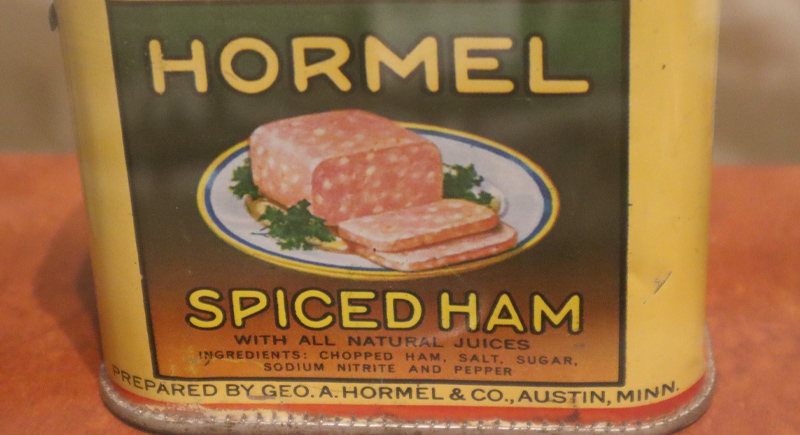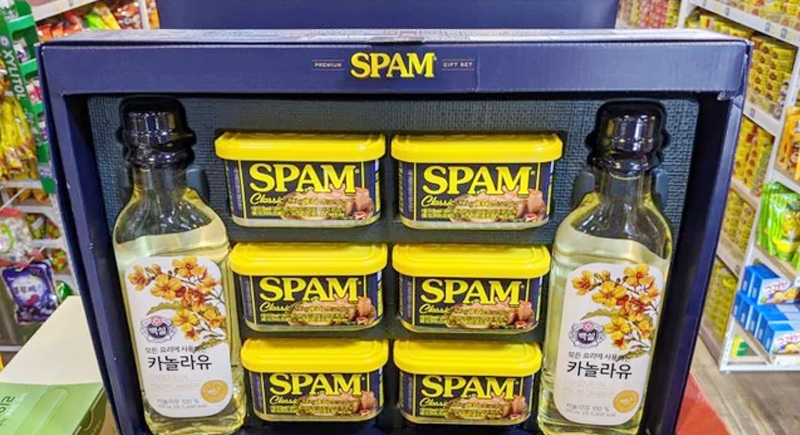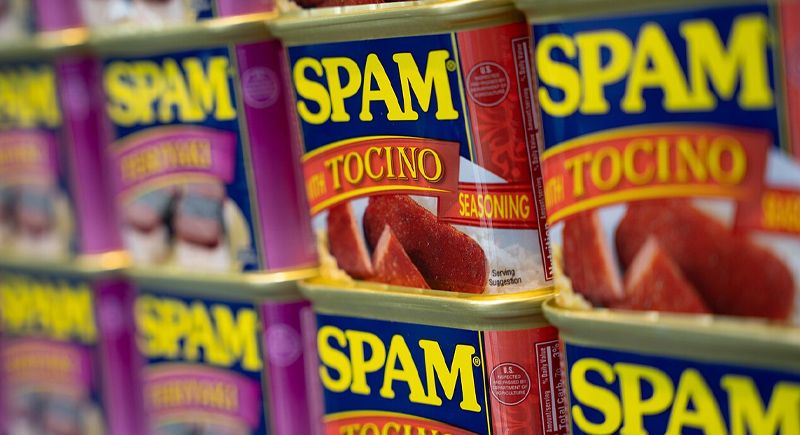15 Ridiculous Myths About Spans People Still Fall For
Spam has been on store shelves since 1937, yet many people repeat the same wrong ideas about it. Many myths trace back to wartime events, while others developed through marketing claims. The real history of Spam is full of facts that are more interesting than the rumors.
Here are the most persistent myths that continue to circulate despite decades of clear evidence to the contrary.
Spam Is Only Sold in the U.S.

Credit: Canva
Numerous people assume Spam never left the United States. In reality, it spread quickly after World War II through military supply chains. Shipments to Allied troops introduced it to dozens of countries, where it stayed part of local cooking traditions. Today, Spam is sold in about 50 countries.
It Was Invented for World War II Rations

Credit: Wikimedia Commons
This myth persists because Spam’s wartime role was so visible. Soldiers carried it into nearly every theater of combat, which made it seem like a military creation. In truth, Hormel launched Spam in 1937 to use pork shoulder in a shelf-stable form. Its long life without refrigeration made it ideal for rations once war began.
Spam’s Ingredients Are a Mystery

Credit: Wikimedia Commons
For years, people have joked about Spam containing unrecognizable meat. This idea has no basis in fact. The recipe lists six ingredients: pork with ham, salt, water, sugar, potato starch, and sodium nitrite. The pork comes from the shoulder, which is valued for flavor and fat.
The Jelly in the Can Is Unsafe

Credit: Wikimedia Commons
You can find a jelly-like layer around the canned pork, made from natural meat juices rich in collagen. It forms during cooking inside the sealed can and helps keep the meat moist during storage and transport. As it cools, the texture changes to a soft gel. It’s completely safe to eat, though it can be removed for people who dislike the texture.
Its Name Clearly Means “Spiced Ham”

Credit: Wikimedia Commons
If you’ve ever wondered what the name of this canned pork actually means, you’re not alone. The mystery has fueled decades of speculation. The most common theory, “spiced ham,” sounds convincing but has never been confirmed. Kenneth Daigneau, an actor and brother of a Hormel executive, submitted the winning name in a 1937 contest and received $100.
Spam Lasts Forever

Credit: X
The idea that Spam can be stored for decades is common among those who keep emergency supplies. Hormel prints a best-by date, usually about three years after production, on every can. The meat often remains safe past that date if stored in a cool place, though quality declines over time.
Hawaii Makes the Majority of the World’s Spam

Credit: Getty Images
What most consumers don’t know is that every can used in Hawaii is shipped from Minnesota, where production takes place. The misconception comes from the state’s strong cultural link to the product, which began during World War II when military shipments brought it to the islands. Over time, it became central to local favorites like musubi and fried rice.
Spam Is the Cheapest Canned Meat

Credit: Wikimedia Commons
A 12-ounce can of the pork product sells for about 33 cents per ounce, which places it in the middle of the canned meat price range. It costs less per ounce than some premium options, such as Libby’s corned beef, yet more than many store-brand varieties. This pricing balance helps it remain competitive without being positioned as a bargain item.
No Chefs Cook with Spam

Credit: Wikimedia Commons
Hawaiian, Korean, and Filipino restaurants treat the canned pork as an essential ingredient and use it in dishes like musubi, fried rice, and hearty stews. In these settings, it’s part of tradition and flavor balance, not just convenience. Some chefs in upscale kitchens also experiment with it and pair it with unexpected ingredients such as caviar.
Spam Is Low-Quality “Poor Man’s Food

Credit: Reddit
It is true that Spam carries a very different image in parts of the world. For example, in South Korea, it appears in decorative gift boxes during major holidays. This was a tradition that began during the Korean War, when it was rare and seen as a generous offering. It remains a symbol of quality in that market, with holiday sales reaching millions of cans.
It’s Only Available in One Variety

Credit: Wikimedia Commons
Flavored versions of the canned pork now sit alongside the classic recipe on store shelves. Hormel produces jalapeño, maple, hot and spicy, teriyaki, and hickory smoke options. Regional releases include Korean BBQ and Tocino, which are designed for markets in Asia and the Pacific. Limited editions also appear occasionally, such as the holiday-themed Figgy Pudding Spam.
Spam Was the Only Canned Meat Of WWII

Credit: Wikimedia Commons
While canned pork gained a lot of attention during World War II, it was not the only product that was fed to soldiers. Companies such as Armour produced similar items for military use. An earlier release and strong branding gave Spam an advantage and allowed it to lead troops to use its name for any comparable canned meat.
The Word “Spam” For Junk Mail Is Unrelated

Credit: Getty Images
Monty Python’s 1970 sketch turned the name of the food item into slang for unwanted messages. In the scene, Vikings in a cafe repeatedly chant “Spam,” overpowering every conversation. Early internet users adopted the reference to describe floods of repetitive text in online spaces. Hormel objected initially, but couldn’t reverse its spread.
Spam Has Never Changed

Credit: Wikimedia Commons
Although the core recipe is generally the same, Hormel has made adjustments. In 2009, potato starch was added to improve the appearance and reduce the amount of gelatin in the can. New packaging formats, such as single-serve pouches, have also expanded its uses.
It’s Only Eaten Straight from the Can

Credit: Canva
Eating the canned pork straight from the tin is possible because it is fully cooked, but that’s just one way to enjoy it. Various individuals fry slices for sandwiches or dice them into stir-fried dishes. It holds its shape when grilled, baked, or breaded, and is typically a part of different meals.